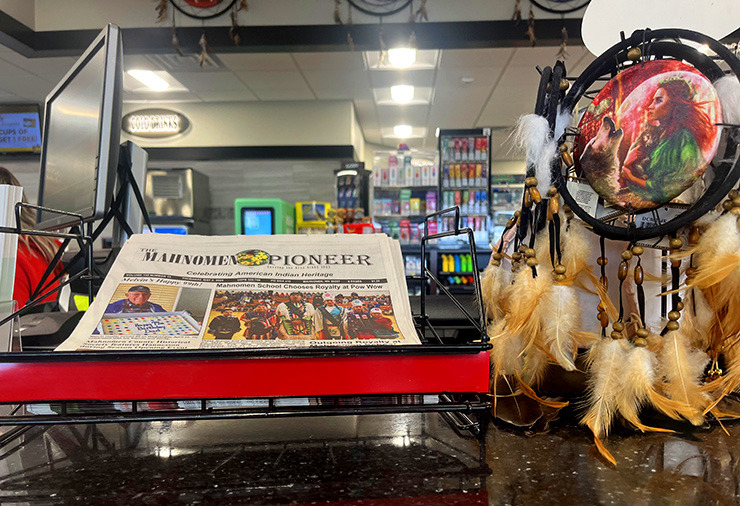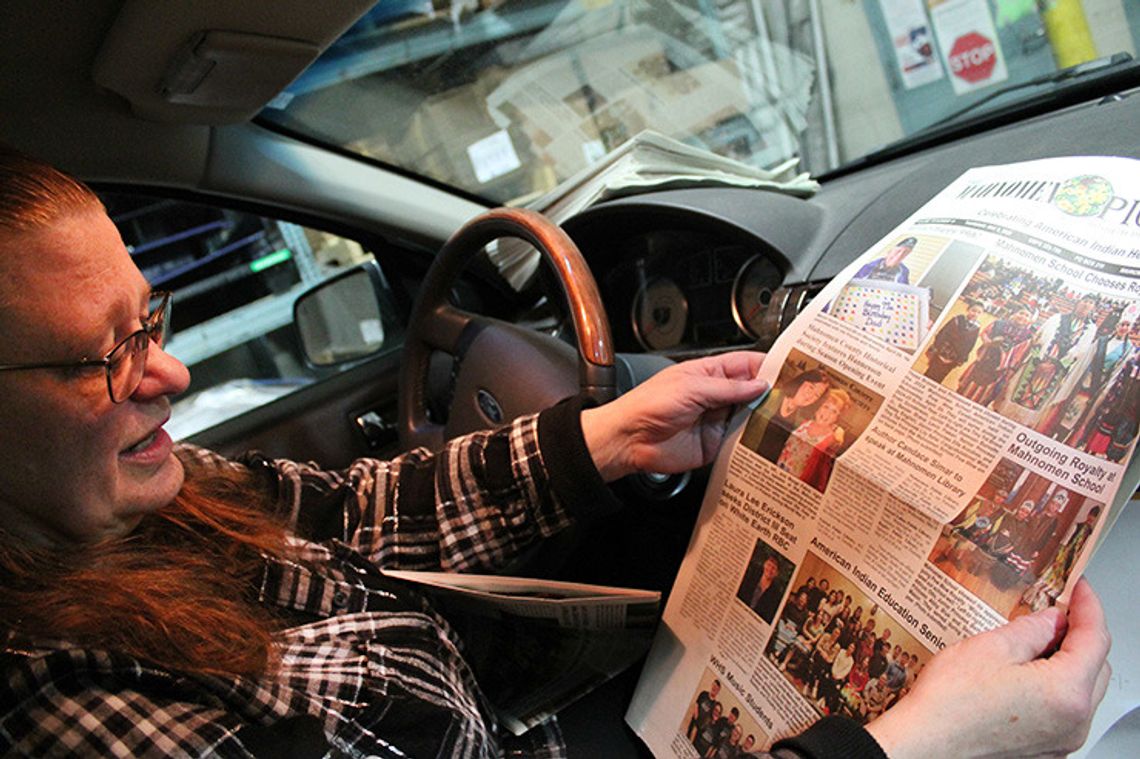minutes from Mahnomen to Detroit Lakes to pick up the papers from the printing press. She then organizes them into her car, based on the order in which she’ll be making deliveries.
She starts in Ogema and drops off papers at various locations — gas stations, community centers, pharmacies and local restaurants — as she makes her way back to Mahnomen. The cycle can take as long as four hours.
On a recent morning, at each stop it was clear that people were eager to read the paper. Longtime reader Darlene Stevens shouted from inside the gas station: “Sue, I haven’t been getting my Mahnomen Pioneer!”
“If I don’t have the paper, I miss it,” said Stevens, who’s been reading the paper for half a century.
Kraft also delivered the papers at the school in Mahnomen, which houses elementary, middle- and high school students. She watched as the school secretary went through each bit of the paper and commented on things she liked. Kraft drops off the paper at the school for people there to read, but also for the students in classes, who have done reports on various parts of the paper since Kraft has owned it.
When Kraft finally got back to the office, she went upstairs to her home to prepare a salad for her and her coworker. And after lunch, she began working on billing for the week, because, of course, she does the bookkeeping, too.
‘Keep it or lose it’
In an average year for the Mahnomen Pioneer, Kraft said she’ll break even financially if she’s lucky.
The Pioneer has around 800 subscribers to the physical paper and 250 online subscriptions and sells a couple hundred each week at drop-off sites.
Kraft brings in about $14,000 in revenue each month from advertising and other sources, but printing the paper once a week for a month costs $3,700. “But that’s not my only expense,” she said. “(People) don’t really realize what’s actually involved.”
At one point, she was making enough money to have more staff and they were able to cover more of the happenings in the community. But as the industry has changed, she’s had to “adapt to survive.”
“I wish I had more people to help me in the operation. I wish I was making more money. I wish I had the money to replace my vehicle,” she said. “I wish I had the money to replace my computers. I wish I had the money to do all of these things.”
Yet the paper continues on.
“We’re in a poverty area, and we may be the only paper, but we’re also surviving,” Kraft said. They (the community) are supporting us. They don’t want to see us go down. Because who’s going to come here to cover the stories of their lives, right?”
Flake, the Pioneer’s designer, said Mahnomen needs the paper to access information, while people in more urban areas simply have more ways to get the news. He worked for Southwest News Media from 1999 to 2012 and said what he’s noticed with its downsizing and ultimate closure is that the need for news sources is greater in rural areas.
“Why (would) you survive, when you’ve got the Star Tribune and other papers?” he asked. “Here, you’ve only got one. So you either keep it or you lose it.”

Kraft starts in Ogema and drops off papers at various locations — gas stations, community centers, pharmacies and local restaurants — as she makes her way back to Mahnomen. The cycle can take as long as four hours. Credit: MinnPost photo by Ava Kian
.jpg)










